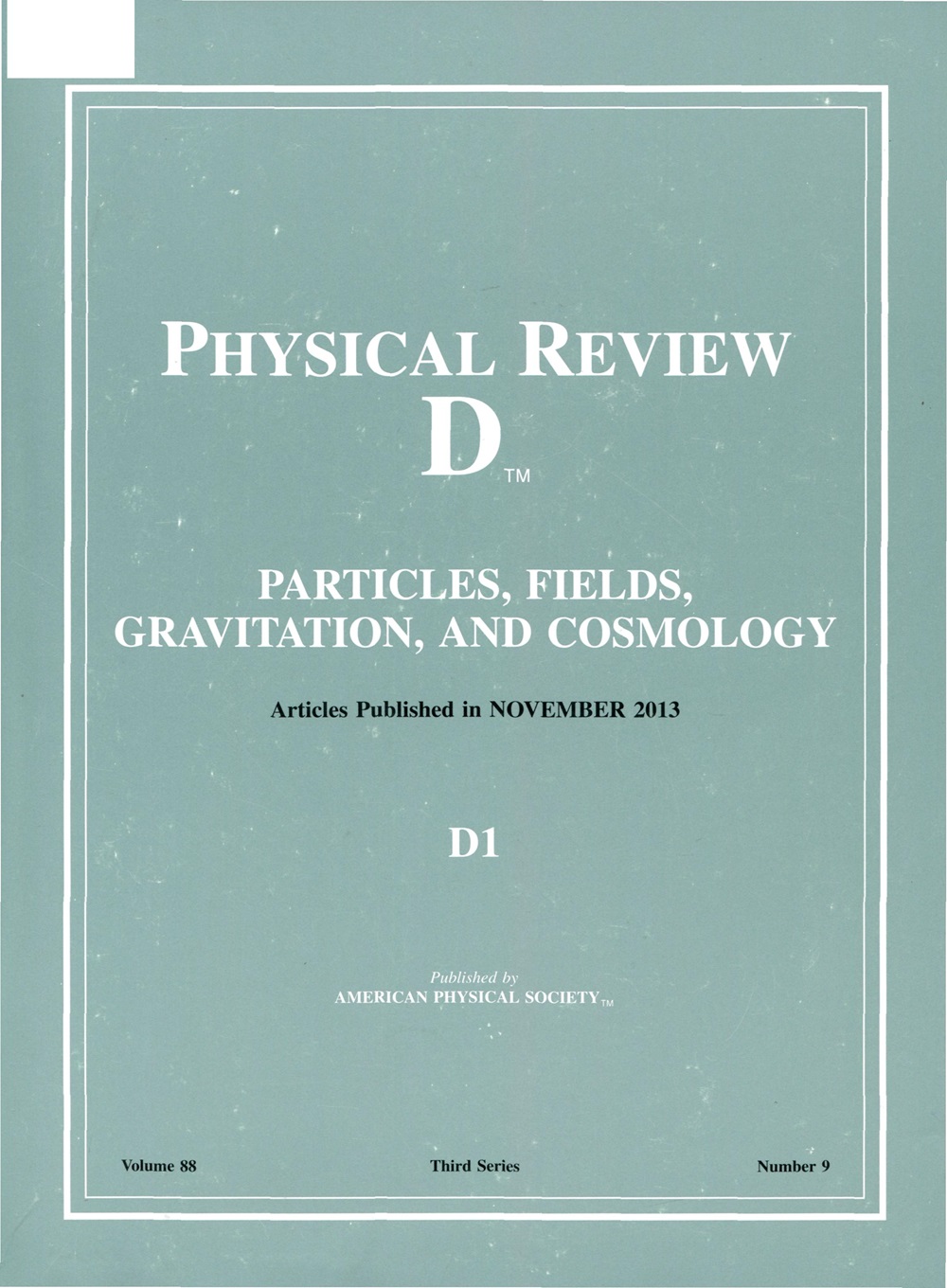用宇宙引力聚焦识别中微子的质量顺序
IF 5
2区 物理与天体物理
Q1 Physics and Astronomy
引用次数: 0
摘要
残中微子的宇宙引力聚焦(CGF)可以提供具有四次方依赖(mi4)的绝对中微子质量的独立测量。我们在本文中首次证明了这如何有助于识别中微子的质量顺序,利用总质量低于倒序阈值的事实允许倒序的区分。考虑DESI时预测的CGF敏感性,对优先∑mi>;0.059 eV的正常排序的偏好从现有的DESI物质聚类方法的89.9%增加到98.2%,而对反向排序的偏好从10.1%增加到1.8%。我们还展示了这如何影响中微子双β和单β衰变测量的前景。2025年由美国物理学会出版本文章由计算机程序翻译,如有差异,请以英文原文为准。
Identifying neutrino mass ordering with cosmic gravitational focusing
The cosmic gravitational focusing (CGF) of relic neutrinos can provide an independent measurement of the absolute neutrino masses mi with fourth-power dependence (m i 4 ∑ m i > 0.059 eV Published by the American Physical Society 2025
求助全文
通过发布文献求助,成功后即可免费获取论文全文。
去求助
来源期刊

Physical Review D
物理-天文与天体物理
CiteScore
9.20
自引率
36.00%
发文量
0
审稿时长
2 months
期刊介绍:
Physical Review D (PRD) is a leading journal in elementary particle physics, field theory, gravitation, and cosmology and is one of the top-cited journals in high-energy physics.
PRD covers experimental and theoretical results in all aspects of particle physics, field theory, gravitation and cosmology, including:
Particle physics experiments,
Electroweak interactions,
Strong interactions,
Lattice field theories, lattice QCD,
Beyond the standard model physics,
Phenomenological aspects of field theory, general methods,
Gravity, cosmology, cosmic rays,
Astrophysics and astroparticle physics,
General relativity,
Formal aspects of field theory, field theory in curved space,
String theory, quantum gravity, gauge/gravity duality.
 求助内容:
求助内容: 应助结果提醒方式:
应助结果提醒方式:


